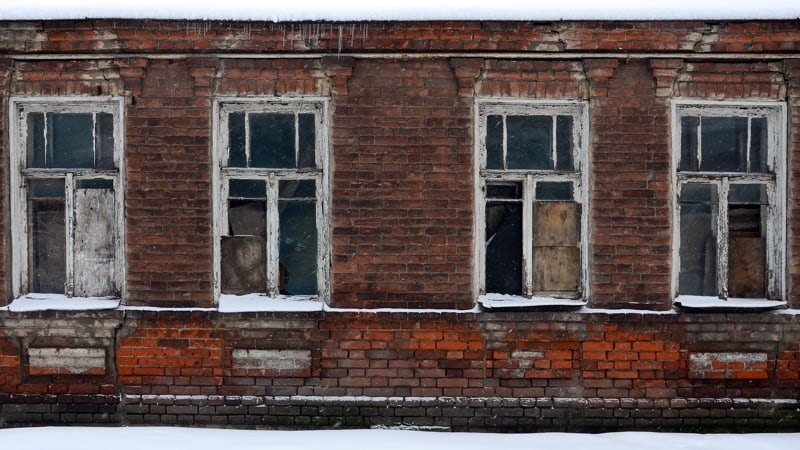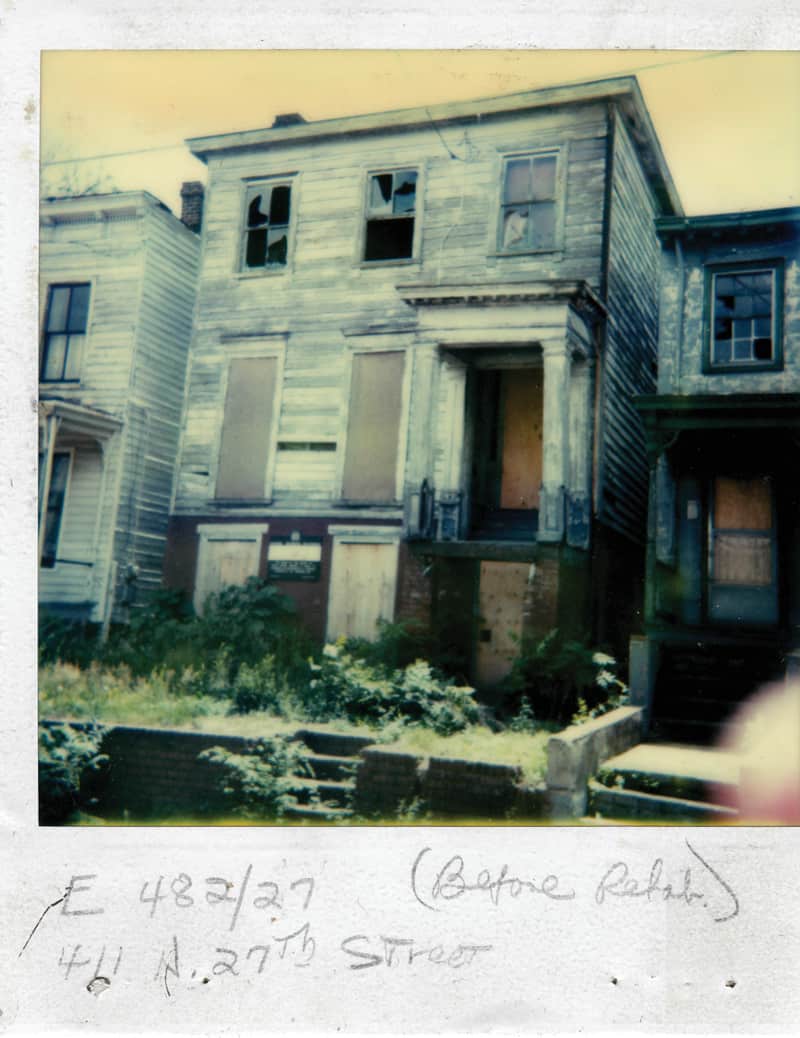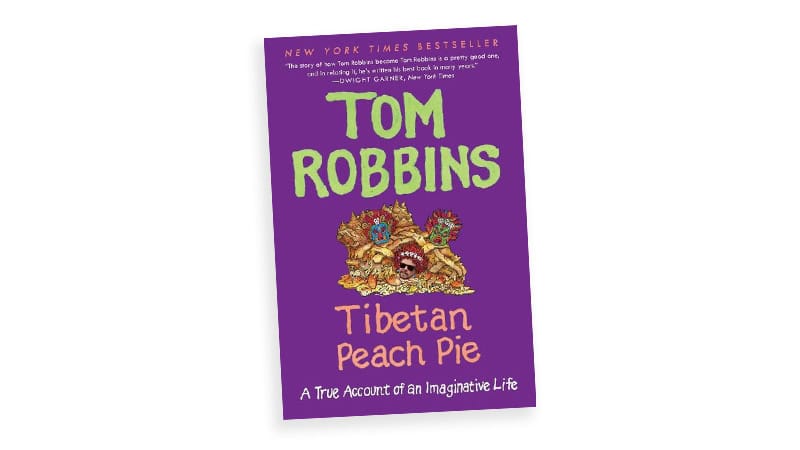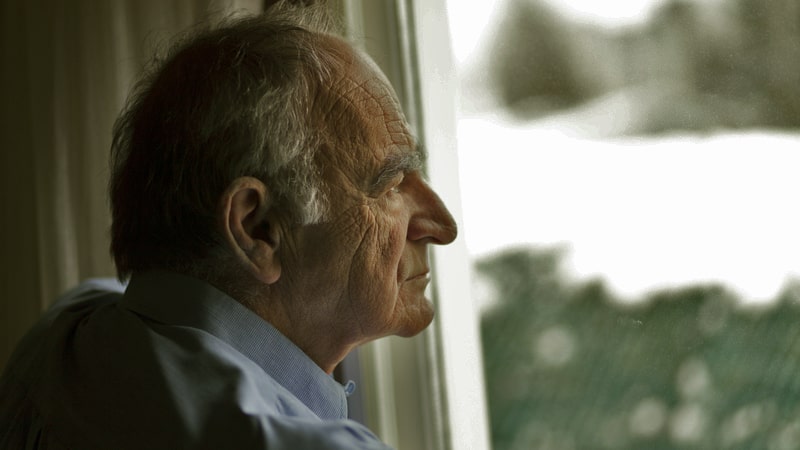If Those Walls Could Talk
First they said ‘help’; then ‘thanks’

In a summer week 30 years ago, Danny and I planted all the trees in the 400 block of North 27th Street, in the north-of-Broad section of Church Hill. Today the trees are all thicker than I am, though I’ve gained my share. The one in front of Danny’s house two doors down from my old place is a little thinner. One day, Danny backed his truck into the young Bradford pear while bringing home a new mantelpiece. He snapped the tree trunk, so the one growing there now is only 20 years old.
We were pioneers, me, Danny, Steve, Gary, a bunch of us. It’s odd and probably incorrect now to say “pioneers” because hundreds already lived in the neighborhood. But what we did was buy old, neglected, empty shells, just beat-up and forgotten structures the city didn’t know what to do with. They were antebellum beauties and simple working-class homes.
Contrary to some tellings of the history of North of Broad, we were not “gentrifiers.” I’m aware of not one instance during my decade there of residents who lost their homes to us. Every block in every direction held many boarded-up homes, dark and empty like missing teeth. With plenty of uninhabited houses, there was never a need to buy someone out. The residents helped us, were glad for us, became our friends and we, theirs.
In 1984, Richmond was drowning in boarded-up buildings. Large swaths of the east and south sides of the city looked bombed out; crime and poverty weighed heavily there.
 I rented a nice house south of Broad on Church Hill. At the time I was a young aspiring writer, which meant I didn’t want to work for a living. I desired to own my own home, but couldn’t afford one. One day in the spring of ’84, my dog Moose and I took a walk. He was a big dog, and I was a big guy, or we wouldn’t have walked north of Broad.
I rented a nice house south of Broad on Church Hill. At the time I was a young aspiring writer, which meant I didn’t want to work for a living. I desired to own my own home, but couldn’t afford one. One day in the spring of ’84, my dog Moose and I took a walk. He was a big dog, and I was a big guy, or we wouldn’t have walked north of Broad.
Much of what we saw looked to be struggling to draw breath. Just a handful of homes on each street was occupied. Gardens and flowers sprinkled the small lawns. Rickety porches held chairs where sometimes older folk rocked; the residents spoke pleasantly to me and my dog as we walked their neighborhood and observed this was not a flourishing place.
On North 27th Street, in the center of one depressed block, stood a white-columned gem. It stood three stories tall with two chimneys; a grand front stair climbed to the second floor. We mounted the creaky steps, ignoring a Do Not Trespass sign. I pried away a plywood board. Moose and I ducked inside.
By the slimmest of sunlight, some of it streaming through holes in the roof, we saw greatness coated in cobweb. Heart pine floors dying to shine again. A turned newel post two-feet thick and a railing that looked to be cherry. Ten-foot ceilings. A fireplace in every room. An above-ground walk-in basement. Hand-hewn beams 150 years old, marked by some pre-Civil War craftsman’s axe. The house felt strong, willing and still able to safeguard the lives of those inside its walls if only someone would first give it back its own life. Moose sniffed out every corner, chased away whatever needed chasing. He seemed to agree.
The next day, I found out from the city that this rotting, slanting architectural treasure was scheduled to be razed in four days. The city’s real estate department made me a price. I ran to my father’s banker who had no reason to trust me, but did because my father hadn’t missed a mortgage payment in his lifetime. I beat the bulldozer by one day.
I spent a decade, my entire 30’s, in that house. When I sold it, the money let me move to California for two years, where I wrote my first published novel. So, in a way, that old house returned the favor, and gave me my life.
I drive past the place all the time. On occasion I’ll get out and wrap my arms around the tree in front to feel the years in it that I feel in myself. I do not climb the tall steps to knock but stand anonymously and admire the continued warmth behind my old floor-to-ceiling windows.
Look for more Native Son columns in the future about my time North of Broad and my relationship with that remarkable house. Restoring it, then living in it, was one of the great adventures of my life, spent among the best neighbors I’ve ever had. It was also the hardest work I’ve ever done. And like the best work, it still stands.


